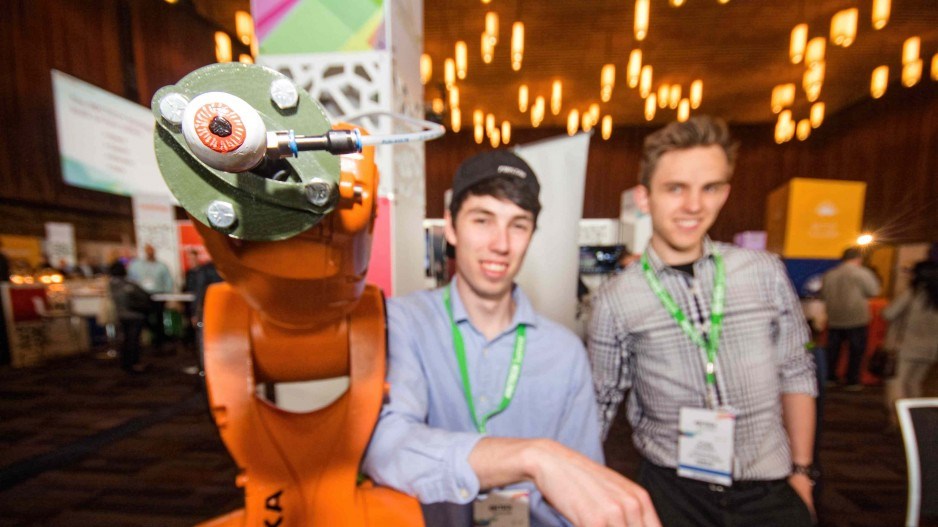En route to a Seattle startup conference two years ago to discuss the role of accelerators in Cascadia, Jeff Hemmett’s road trip took an unexpected extension when he was pulled over at the border.
“I had no idea if they were working through a new training protocol or something. But the way they took what I was doing was that I was coming down into America to influence business interests,” Hemmett, who now works as the chief revenue officer at startup Keela, told Business in Vancouver. “I was so, so close to being turned around and missing this panel.”
Hemmett’s close-to-kiboshed efforts to spread the word about Cascadia are a microcosm of the challenges for regional efforts to boost the tech sector.
Why it matters: Despite Vancouver and Seattle’s proximity, experts speaking at the B.C. Tech Summit in mid-May emphasized Cascadia has much ground to make up to maximize economic growth in the region.
“From an infrastructure point of view, what is it that we need next? Is it kind of a super Nexus card to get back and forth with ease?” B.C. innovation commissioner Alan Winter said during a Cascadia-centred panel during Western Canada’s largest tech summit.
“[It’s] one of those things that would make it easy for a venture capitalist from Seattle to come up and go back again.”
As it stands, U.S.-based firms will dismiss doing business in Canada outright out of fear it will create headaches come tax season, according to Patricia Beckman, managing director of Seattle-based angel investment network Wings.
“They just think it’s too difficult,” she said during the panel.
Meanwhile, Mitacs CEO Alejandro Adem, whose non-profit group helps connect Canadian academic researchers with the private sector, acknowledged funding problems are getting in the way of stronger regional ties.
“I would like to see seamless border co-operation between the funding [for] institutions here in Canada and the U.S., where you can find a real partnership where things are fair and balanced, and non-bureaucratic.”
Adem added that the immense amount of paperwork involved in many potential cross-border collaborations is stymieing partnerships.
Stronger links between Vancouver and Seattle have been emerging in recent years, beginning in 2016 when the B.C. and Washington state governments agreed to collaborate on a “Cascadia Innovation Corridor.”
The initiative involves post-secondary institutions and private enterprises partnering to create more economic opportunities between the regions’ tech sectors.
Since then the two cities have each hosted Cascadia conferences.
Last month, daily seaplane services launched between Vancouver and Seattle.
And earlier this year the B.C. government committed $300,000 to study a high-speed link to connect the regions. Washington state lawmakers had previously approved up to US$1.2 million for the feasibility study.
“This [Cascadia partnership] has been thought about and tried many times before and hasn’t really solidified,” former Washington state governor Christine Gregoire said during a second separate Cascadia panel. “What has happened over the course of the last two years was a test as to whether the time is now.”
Gregoire said commitments to studying transportation infrastructure linking the region indicates “now is the time.”
“It is real, but I also am acutely aware that it’s going to take intentional action,” she said.
During a separate discussion session a day earlier, LinkedIn Canada’s Jake Hirsch-Allen, who leads the social network’s higher-education initiatives, presented data showing that its Vancouver members were more connected to those based in Toronto than those in Seattle. Meanwhile, LinkedIn members in Seattle had stronger connections to New York City than to Vancouver.
“Despite Seattle really not being far geographically, [when we] measure the distance between Seattle and Vancouver in terms of LinkedIn connections, it’s 1,900 kilometres away,” Hirsch-Allen said. “If we want this [Cascadia] corridor to be a place where people work together to exchange skills, build companies or organizations or ideas together, they need to be connected.”
Meanwhile, Hemmet said the strategic opportunities are obvious for companies along the corridor.
“They’re talking about talent flow and access to talent. Obviously that’s interesting because there isn’t a single business leader building a company right now that isn’t thinking about how to acquire and recruit talent,” he said.
“And then it’s just removing barriers like that border, making it easier for us to set up that satellite office in Seattle and vice versa.”
torton@biv.com
@reporton



